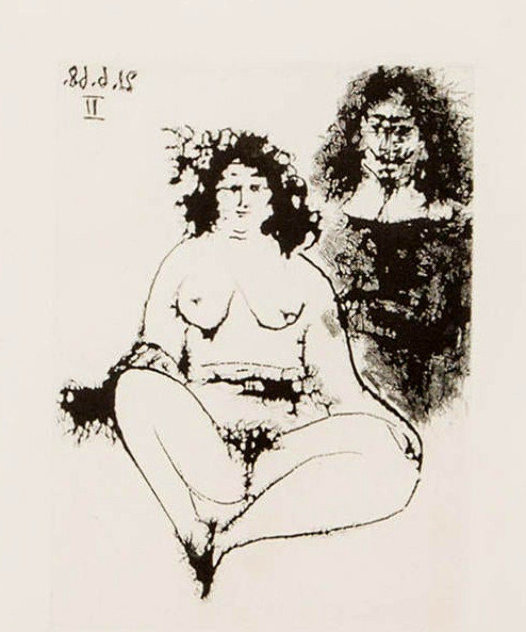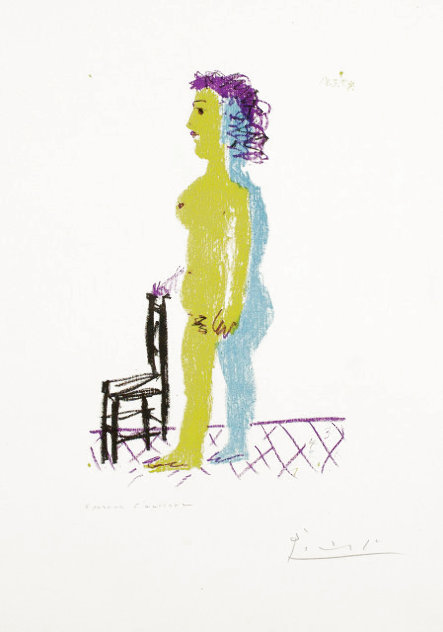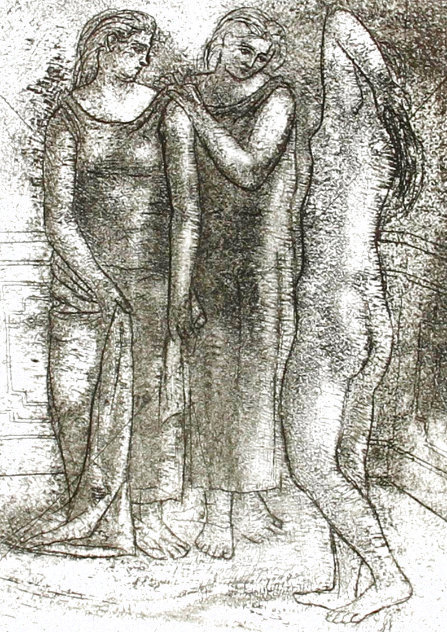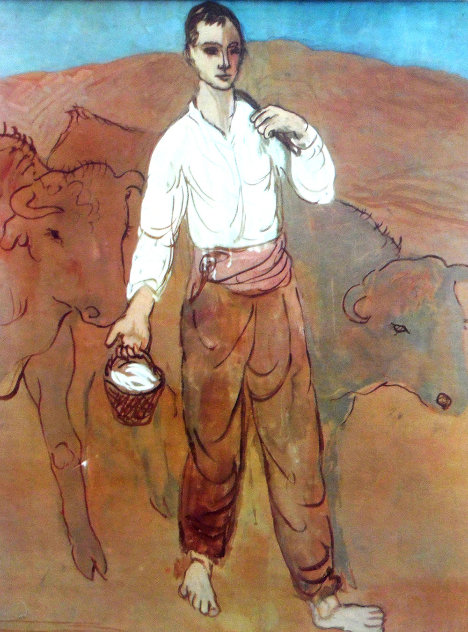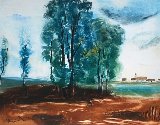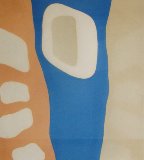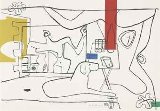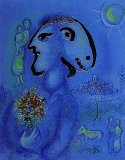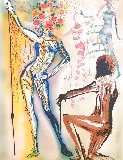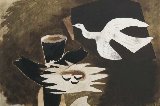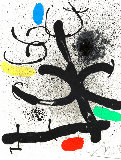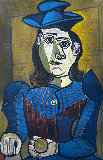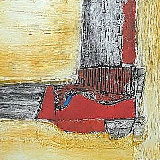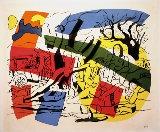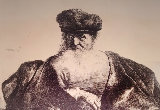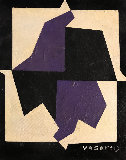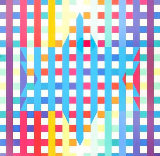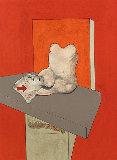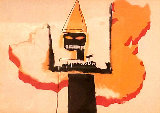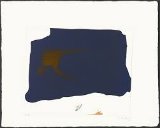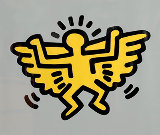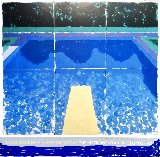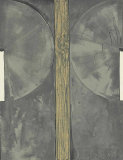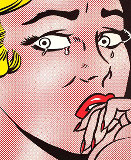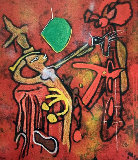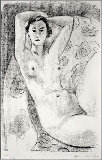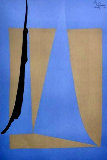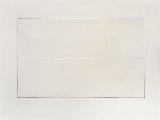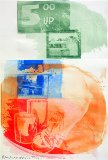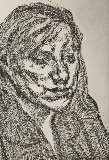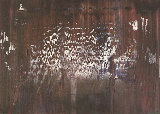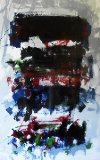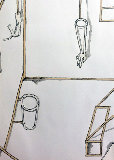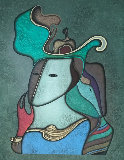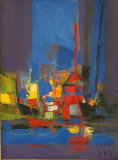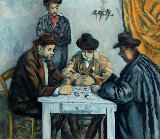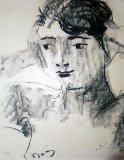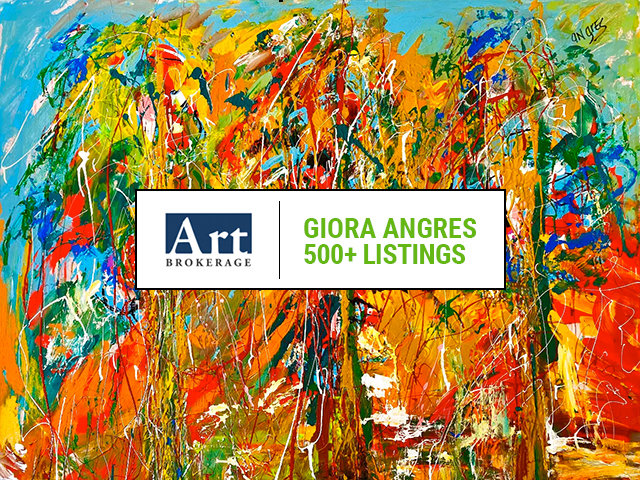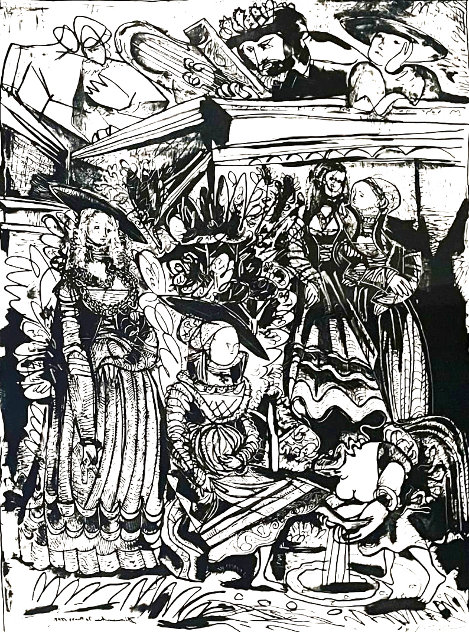



David and Bathsheba, After Lucas Cranach (David et Bethsabée, d'après Lucas Cranach) HS
Pablo Picasso
Limited Edition Print : Lithograph, Paris, 3/30/1947
Size : 26x19.5 in | 66x50 cm
Edition : From the Edition of 50
- 🔥Fabulous - Framed Hand Signed Limited Edition Lithograph - Inquire - 8 Watchers - Blue Chip
Year1947
Hand SignedLower Right in Pencil
Condition Excellent
Framed with Glass
Purchased fromAuction House 2021
Provenance / HistoryWeinstein Gallery, San Francisco, CA
Story / Additional InfoPablo Picasso (1881 - 1973). Title: David and Bathsheba (After Lucas Cranach), David and Bethsabee (d’apres Lucas Cranach). Medium: Original Lithograph, Paris, 3/30/1947, wash, drawing, scraper on zinc, 2nd and published state of the 10 states, on Arches paper, signed by the artist in pencil. Sheet size: 26 x 19.5” Inches. Reference: Bloch, Georges. 1968-1979. Pablo Picasso, catalogue de l'oeuvre gravé et lithographié, 4 vol. Berne: Kornfeld and Klipstein. (B.440) Riopelle, Christopher, Anne Robbins, Elizabeth Cowling, et al. 2009. Picasso: Challenging the Past (National Gallery, London, February 25 - June 7, 2009). London: National Gallery. (36) Gauss, Ulrike. 2000. Pablo Picasso Lithographs. Graphikmuseum Pablo Picasso Münster: The Huiziga collection. Catalogue by Felix Reusse. Ostfildern-Ruit: Hatje Cantz. (203) Mourlot, Fernand.Mourlot, F. (2009). Picasso Project: Picasso. The Lithographic Work. Volume II. 1949-1969. San Francisco: Alan Wofsy. Reference: Mourlot 109 (Second State). Edition: From the edition of 50. There were also 5 artists proofs. Published by: Gallerie Louis Leiris. Public Collections: The British Museum, London (States 2 & 8) Musee Picasso, Paris, The Museum of Modern Art, NYC. (Inv 254.1947). Acquired through the Lillie P. Bliss Bequest. Notes: Lucas Cranach (1472 - 1553), a printmaker in woodcut and engraving who had been Court Painter to the Electors of Saxony for most of his career. The prototype was painted in 1526, an Oil and tempera on wood, and is currently in the Gemaldegalerie, Berlin. The recent Tate Gallery exhibition “Picasso: Challenging the past” dealt with the artists perception of himself as part of a long artistic heritage building on the examples and methods of previous generations. In the catalogue for this work the affinity Picasso felt for Cranach is clear and this very piece is used to illustrate this point. Picasso did feel a sense of rivalry with some artists of previous generations but his admiration for Cranach was deep and well inspired. “David and Bathsheba” was a work which especially appealed to Picasso and his interpretation of it was made in 10 different states of this print. The artist’s creativity knew no bounds in constantly re-inventing this image in so many dynamic and different ways. The Biblical story of King David and his love for Bathsheba also appealed to Picasso. The story was that Bathsheba was the wife of a general, Uriah the Hittite. King David, while walking on the roof of his palace, saw Bathsheba, having a bath. He immediately desired her and later made her pregnant. In an effort to conceal his sin, David summoned Uriah from the army (with whom he was on campaign) in the hope that Uriah would re-consummate his marriage and think that the child was his. Uriah was unwilling to violate the ancient kingdom rule applying to warriors in active service. Rather than go home to his own bed, he preferred to remain with the palace troops. After repeated efforts to convince Uriah to have sex with Bathsheba, the king gave the order to his general, Joab, that Uriah should be placed in the front lines of the battle, where it was the most dangerous, and left to the hands of the enemy (where he was more likely to die). David had Uriah himself carry the message that ordered his death. After Uriah was dead, David made the now widowed Bathsheba his wife. David's action was displeasing to the Lord, who accordingly sent Nathan the prophet to reprove the king. Bathsheba was the mother of the future King Solomon. Complementing the Cranach painting Picasso reproduced the Cranach work relatively faithfully in respect to it’s composition. In this he showed nine individuals and on a terrace was King David with his harp. Bathsheba was depicted with a servant washing her hands accompanied by three attendants. The clothes of the parties are similar in the Cranach and Picasso works. As Picasso’s states developed the work became more cubist. Authenticity: COA from Weinstein Gallery, Geary Street, San Francisco dated 6/11/2009. Printed by: Mourlot Freres, Paris.
Certificate of AuthenticityArt Brokerage
LID142884
Pablo Picasso - Spain
Art Brokerage: Park West Artist: Pablo Picasso Blue Chip Spanish Artist: Pablo Picasso was one of the most influential artists of the 20th century. His ingenious use of form, color, and perspective profoundly impacted later generations of painters, including Willem de Kooning and David Hockney. “There are artists who transform the sun into a yellow spot, but there are others who, thanks to their art and intelligence, transform a yellow spot into the sun,” he once said. Born Pablo Diego José Francisco de Paula Juan Nepomuceno Crispín Crispiniano María de los Remedios de la Santísima Trinidad Ruiz Picasso on October 25, 1881 in Málaga, Spain, his prodigious talent was cultivated early on by his father the painter Jose Ruíz Blasco. Picasso went on to attend the Royal Academy of San Fernando in Madrid, and lived for a time in Barcelona before settling in Paris in 1904. Immersed in the avant-garde circles of Gertrude Stein, he rapidly transitioned from Neo-Impressionism through the Blue Period and Rose Period, before reaching a culmination in his masterpiece Les Demoiselles d’Avignon (1907). Constantly in search of pictorial solutions and in dialogue with his friend Georges Braque, Picasso melded forms he saw in African sculpture with the multiple perspectives he gleaned from Paul Cézanne, to produce Cubism. Not limited to painting, the artist also expressed himself through collage, sculpture, and ceramics. Having been deeply affected by the ongoing Spanish Civil War, Picasso created what is arguably his most overtly political work Guernica (1937), a mural-sized painting depicting carnage with jagged shapes and contrasting grayscale. The artist was prolific up until his death on April 8, 1973 in Mougins, France. Today, his works are held in the collections of The Museum of Modern Art in New York, the Tate Gallery in London, the Hermitage Museum in St. Petersburg, as well as institutions devoted solely to his life work, such as the Museo Picasso Málaga, the Museu Picasso in Barcelona, and the Musée National Picasso in Paris. Listings wanted.


